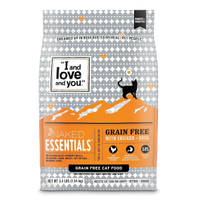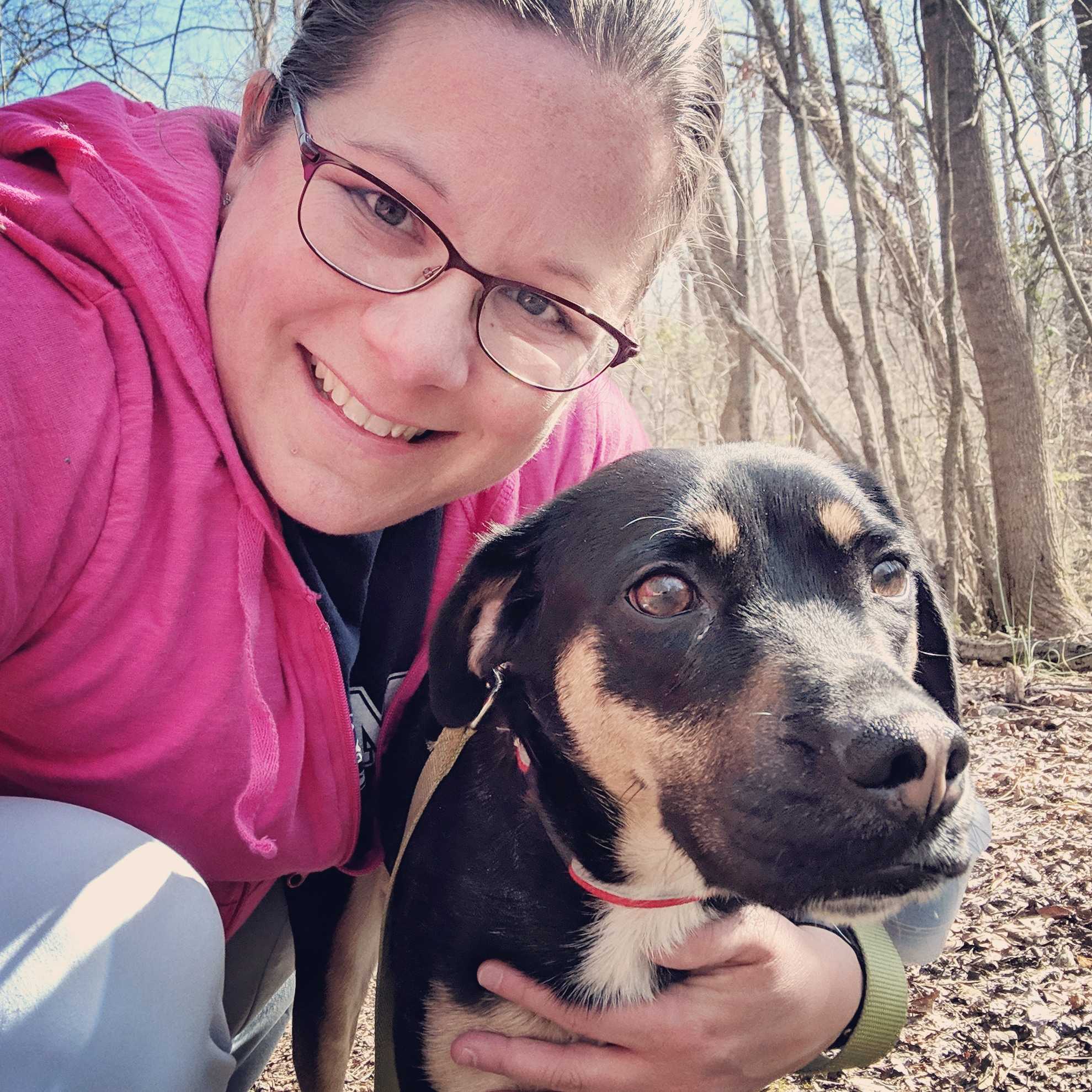How much should I feed my cat? Here’s what a vet recommends
Wondering, ‘How much should I feed my cat?’ We asked a vet for her expert advice
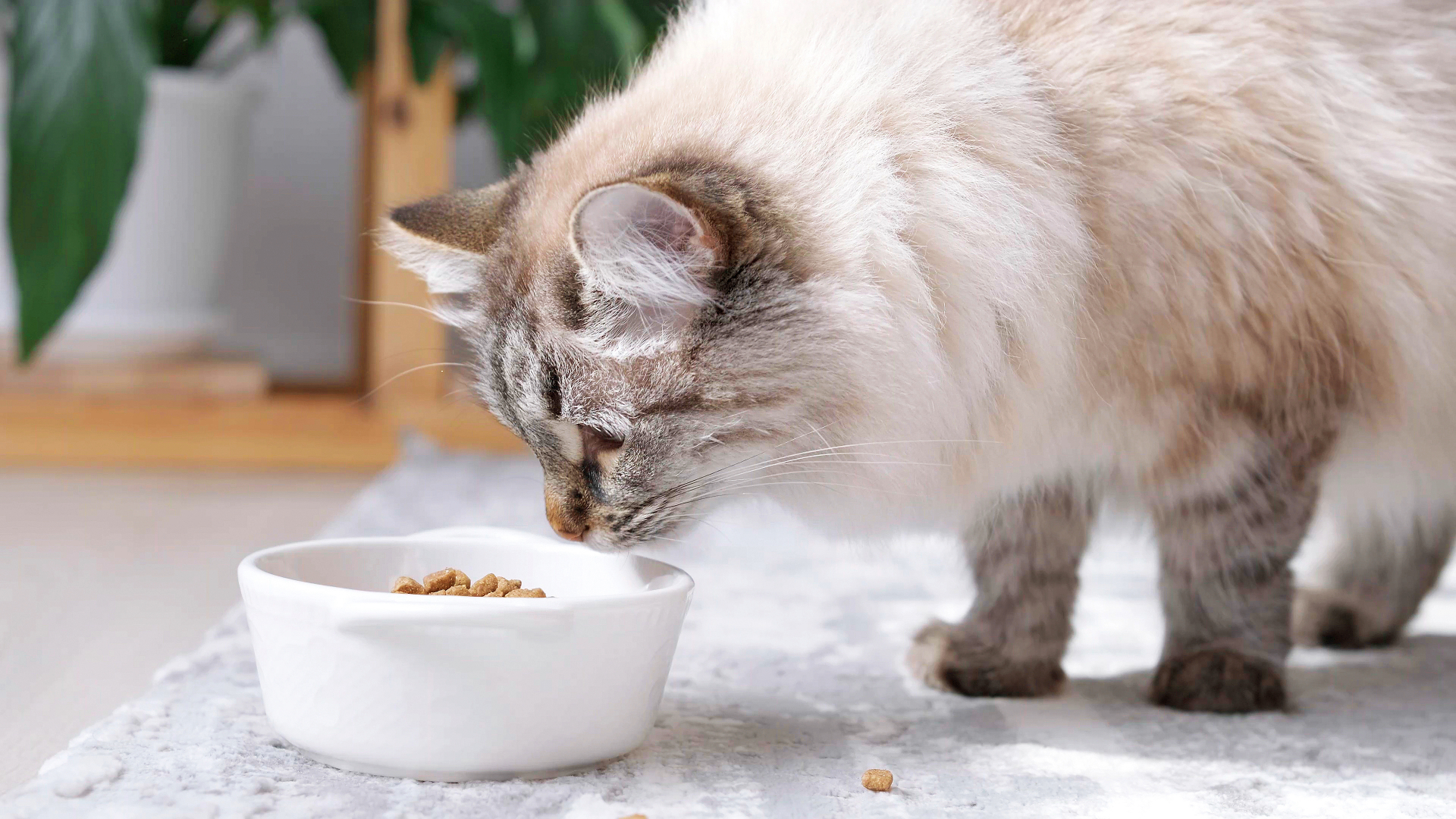
If you’ve got a food-obsessed feline who won’t stop begging for food, you might be asking yourself, ‘How much should I feed my cat?’
Since this isn’t a one-size-fits-all kind of question, it can be tricky to figure it out and lots of pet parents end up overfeeding their cat, which can lead to obesity and other health problems, even if you are feeding the best cat food. In fact, over half of cats in the US are overweight!
To settle this once and for all, we spoke with expert vet Dr. Catherine Barnette to find out how much food your cat really needs. Spoiler alert: it all depends on genetic factors, your cat’s activity levels, and the calorie density of their diet – and it takes some trial and error to get it right!
How much should I feed my cat?
Each cat food has different feeding guidelines, because foods differ in caloric density. On the label of your can or bag of cat food, look for a chart that provides recommended daily feeding guidelines, based on body weight. If you're unsure of how much your cat weighs, you'll need to pay a visit to the vet or invest in the best scales for pets.
Once you have determined how much your cat needs to eat each day, based on their healthy weight, divide this amount into two or three separate meals.
When you measure your cat’s food, accuracy is important. Dry food should be measured using a measuring cup; don’t try to 'eyeball' it, because a small increase in food can translate to a large increase in calories! Wet food is often measured as whole or partial cans, which makes measurement a little more straightforward.
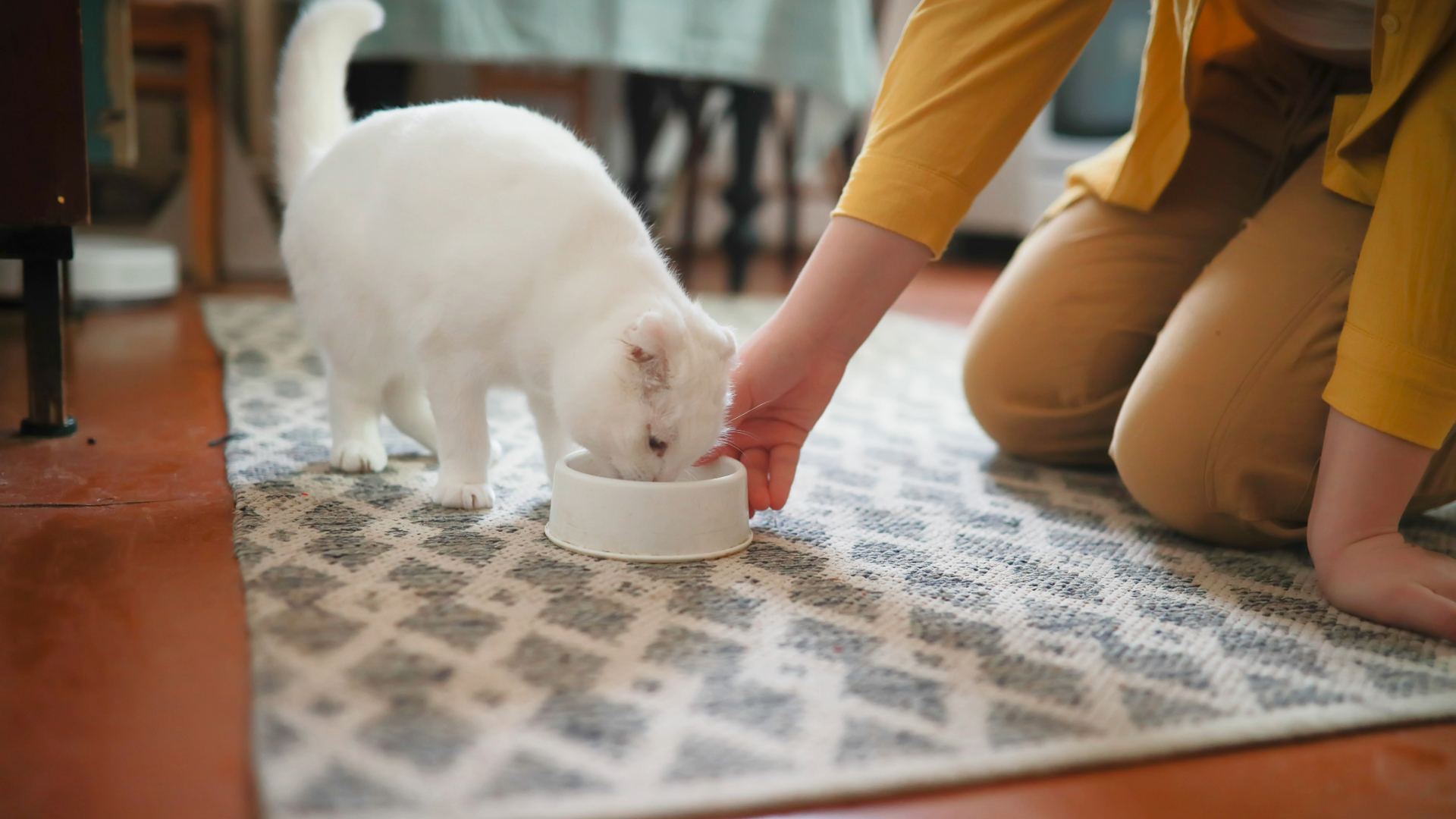
Keep in mind that feeding guidelines are not an exact, one-size-fits-all recommendation. The cats involved in feeding studies may be more active than the average indoor house cat. Additionally, every cat has a slightly different metabolism.
Some cats need more or less food than the label guidelines recommend. Monitor your cat’s body condition (overall appearance) to ensure that they are not becoming overweight or underweight.
A cat that is at a healthy weight will have an obvious waist when viewed from the side or from above. You should also be able to easily feel your cat’s ribs, but not be able to see them. If you’re concerned that your cat is getting overweight, read our guide to healthy weight loss for cats.
Give your cat several weeks to adjust after any food change, then re-evaluate your cat’s body condition. If your cat is gaining weight, decrease their daily food intake by approximately 10%.
If your cat is losing weight, increase their food quantity by 10%. Continue making these small changes every few weeks until you arrive at a food quantity that allows your cat to maintain a healthy weight.
How does obesity affect cats?
The question, 'how much should I feed my cat?' has prompted numerous investigations. In a 2017 study, the Association for Pet Obesity Prevention found that 59.5% of cats in the United States are classified as overweight or obese.
This isn’t a cosmetic issue; being overweight or obese can shorten a cat’s lifespan. Obese cats are at higher risk of a number of serious medical conditions, including diabetes, arthritis, and bladder stones. They also often struggle to groom themselves, resulting in skin and bladder infections.
While many of the health issues associated with obesity develop gradually over time, obese cats are also prone to an acute illness.
Hepatic lipidosis, or fatty liver disease, is a condition that can take a cat from apparently healthy to critically ill in just a matter of days. It occurs when an obese cat goes without eating (or eats significantly less than usual) for a period of several days.
The body’s fat stores are rapidly mobilized to provide energy, but all of this fat floods into the liver and interferes with normal liver function. Cats with hepatic lipidosis rapidly develop icterus or jaundice (yellow eyes and gums), vomiting, and diarrhea. If not treated quickly and aggressively, hepatic lipidosis can be fatal within a matter of days.
Given the long-term and acute health risks associated with obesity, all cats should be maintained at a healthy body weight. If you’re worried about your cat’s weight, work with your vet to develop an appropriate weight-loss plan.
Don’t start your cat on a crash diet without veterinary guidance, because the last thing you want is for your efforts at a healthier lifestyle to cause hepatic lipidosis.
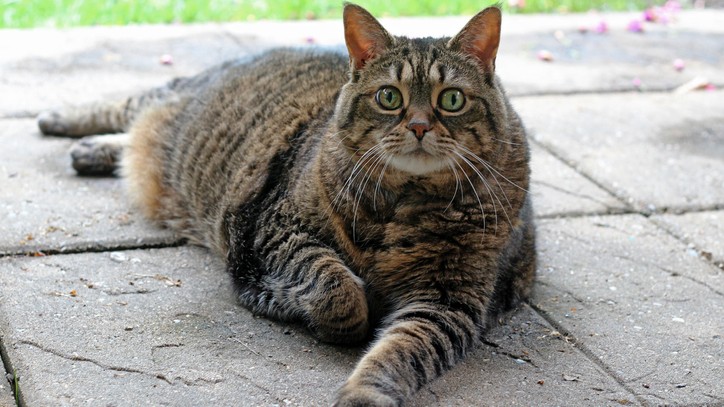
Should you feed dry food or wet food?
Well-balanced feline diets are available in both dry and wet (canned) formulations. Sometimes it’s hard to know which is a better option.
Most vets feel that cats benefit from a wet diet. These diets are often lower in carbohydrates than dry food, and cats don’t need high levels of dietary carbohydrates. Additionally, feeding the best wet cat food increases a cat’s water intake. Many cats drink limited amounts of water, and dehydration may play a role in the development of chronic kidney disease and lower urinary tract disease. (Buying one of the best pet water fountains is another way to encourage drinking).
I and love and you Chicken Naked Essentials Dry Cat Food
High in protein and nutritionally complete, this dry cat food is an excellent choice and contains prebiotics and probiotics that support gut health and the immune system. The recipe comes in eight tasty flavors, including chicken and duck, as well as salmon and trout.
While wet foods have benefits, they also have their drawbacks. Wet food is often more expensive to feed than the best dry cat foods. Additionally, wet food can spoil in your cat’s food bowl; anything that is not eaten within a couple of hours must be discarded, so free feeding is usually not an option. Feeding wet food also typically requires storing partial cans – covered – in the refrigerator. While these may all be relatively mild inconveniences, they lead some cat owners to prefer dry food over canned food.
ZIWI Peak Canned Wet Cat Food
ZIWI’s wet cat food is high in protein, with ethically sourced meat as the first ingredient in all flavors (chicken, lamb, mackerel, beef, rabbit and lamb, venison, and mackerel and lamb). The recipe includes omega-3s to support skin, coat, and joint health, along with essential vitamins, minerals, and amino acids.
If you’re unsure of whether to feed your cat dry or canned food, talk to your vet. They are familiar with your cat’s health history and can help you make the most appropriate decision for your cat. For more guidance, read our other features that answer, 'Is dry cat food best?' and 'Is wet food bad for cats?'
By following label recommendations, measuring your cat’s meals, and monitoring your cat’s body condition closely, you can ensure that your cat remains at a healthy body weight, and avoids the negative impacts associated with obesity.
If you’re keen to ensure you’re giving your kitty the best in feline nutrition, check out our vet’s top tips for feeding a cat properly. Want to know how to tell if your kitten is overweight? Check out our vet's guide for advice.

Dr. Barnette is a graduate of the University of Florida, where she received both her B.S. in Zoology and her Doctor of Veterinary Medicine (DVM). She has 15 years of clinical experience as a small animal veterinarian, treating dogs, cats, and occasional exotic patients. She now works as a freelance veterinary writer, creating educational content for veterinarians, veterinary team members, and dedicated pet owners. Dr. Barnette lives in southwest Florida with her husband and daughter (plus two cats, a dog, and a rescued dove!) and enjoys kayaking, biking, and hiking.
PetsRadar Newsletter
Get the best advice, tips and top tech for your beloved Pets
Dr. Barnette is a graduate of the University of Florida, where she received both her B.S. in Zoology and her Doctor of Veterinary Medicine (DVM). She has 15 years of clinical experience as a small animal veterinarian, treating dogs, cats, and occasional exotic patients. She now works as a freelance veterinary writer, creating educational content for veterinarians, veterinary team members, and dedicated pet owners. Dr. Barnette lives in southwest Florida with her husband and daughter (plus two cats, a dog, and a rescued dove!) and enjoys kayaking, biking, and hiking. Learn more about Dr. Barnette at www.linkedin.com/in/catherinebarnette.
- Megan MilsteadStaff Writer
